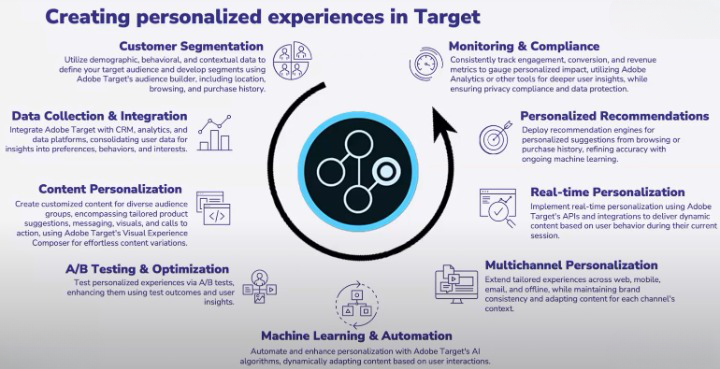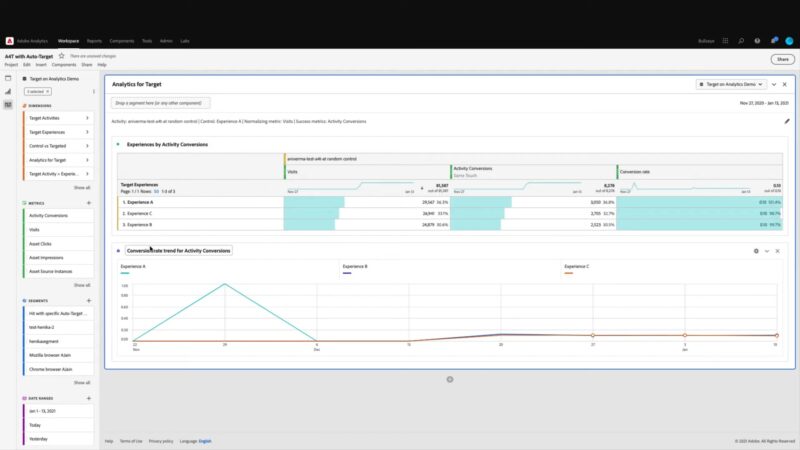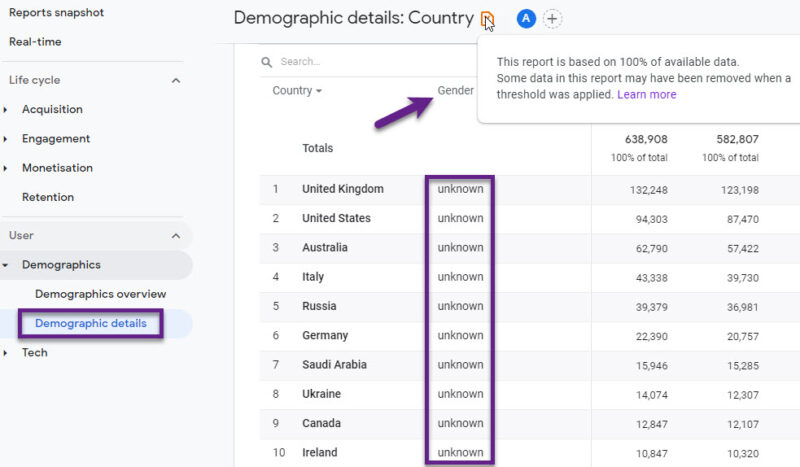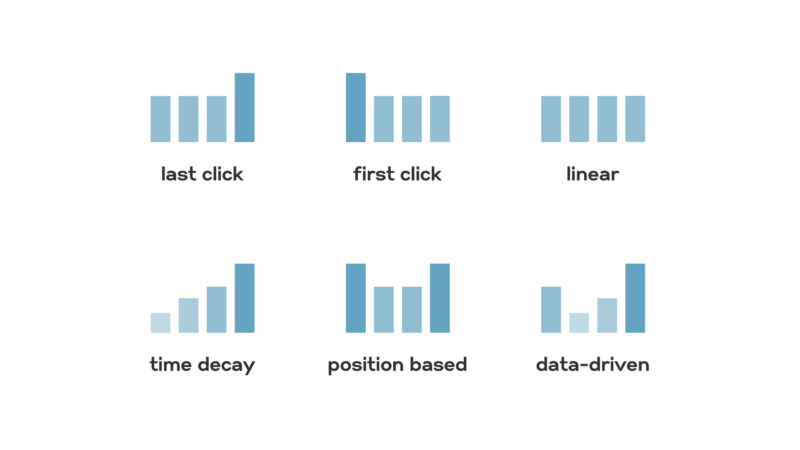Adobe Target is part of Adobe’s Marketing Cloud, offering a powerful way for marketers and businesses to create tailored and engaging content for their audience.
It facilitates A/B testing, multivariate testing, and personalization, making it a multifaceted tool for improving online user experiences.
Let’s delve into the various aspects that make Adobe Target a critical asset for digital marketers.
Definition and Overview
Adobe Target is a comprehensive marketing software that empowers businesses to optimize their digital content and enhance user engagement.
It provides tools for creating, managing, and testing various content variations to identify the most effective versions.
Adobe Target allows marketers to deliver tailored experiences to different audience segments by:
- Facilitating A/B testing
- Multivariate testing
- Automated personalization
The software leverages advanced algorithms and machine learning capabilities to analyze user behavior and preferences.
Adobe Target’s robust targeting capabilities ensure that the right content reaches the right users at the optimal time, enhancing user satisfaction and driving conversions.
It supports seamless integration with other Adobe Experience Cloud products, providing a unified platform for managing and optimizing the entire customer experience.
By using Adobe Target, businesses can improve:
- Marketing efficiency
- Boost customer engagement
- Achieve better ROI
Key Features
- A/B Testing: Compare different versions of web content to determine which performs best.
- Multivariate Testing (MVT): Test multiple variables simultaneously to understand how they interact.
- Personalization: Deliver customized content to users based on their preferences, behavior, or demographics.
- Automated Recommendations: Use algorithms to suggest products or content to users.
- Analytics and Reporting: Measure and analyze the performance of different strategies and campaigns.
A/B Testing
A/B testing in Adobe Target allows you to compare two or more versions of a webpage or app against each other to determine which one performs better. It helps in:
| Benefit | Description |
|---|---|
| Improving Conversion Rates | By understanding what resonates with users. |
| Enhancing User Experience | By identifying and implementing what works best. |
| Minimizing Risk | By testing changes with a segment of users before full-scale implementation. |
Multivariate Testing
Unlike A/B testing, multivariate testing examines multiple variables simultaneously.
This advanced feature enables a more in-depth understanding of how various elements interact with each other and impact the user experience.
Delivering Tailored Experiences

Personalization is at the heart of Adobe Target, enabling marketers to craft unique and customized experiences for each user.
This powerful feature allows businesses to create content that resonates with individuals based on various factors, thereby enhancing user engagement and satisfaction.
Adobe Target utilizes data from a multitude of sources to inform its personalization strategies.
For instance, if a user frequently visits pages related to a specific product category, Adobe Target can prioritize displaying similar products or relevant content to that user.
Past purchases are another critical factor in delivering personalized experiences.
Adobe Target can use purchase history to recommend complementary products, offer exclusive deals on items that a user has shown interest in, or remind them of items left in their cart.
Location-based personalization is also a significant aspect of Adobe Target’s capabilities.
Benefits of Personalization

- Increased Engagement: Personalized content resonates more with users.
- Higher Conversion Rates: Customized experiences lead to more successful customer journeys.
- Building Customer Loyalty: Personalized interactions foster a more profound connection with the brand.
Algorithm-Based Suggestions
Adobe Target employs algorithms to deliver personalized product or content recommendations to users.
These algorithms analyze vast amounts of data to understand individual preferences and behavior, ensuring that the suggestions are highly relevant and engaging.
The recommendation engine in Adobe Target takes into account a variety of data points to tailor its suggestions. For instance, it examines a user’s browsing history to identify patterns and interests.
If a user frequently views or interacts with certain types of products or content, the algorithm will prioritize similar items in its recommendations. It increases the likelihood that the user will find the suggested items appealing.
Additionally, Adobe Target considers past purchase behavior when generating recommendations. By analyzing what a user has previously bought, the algorithm can suggest complementary products or items that align with their purchasing habits.
For example, if a user has purchased a camera, it might recommend related accessories like:
- Lenses
- Tripods
- Camera bags
Enhancing Shopping Experience
Automated recommendations powered by Adobe Target are particularly impactful in the e-commerce sector, guiding users through a personalized shopping experience and significantly increasing the likelihood of purchase.
One of the primary ways it enhances the shopping experience is by presenting personalized product recommendations at various touchpoints throughout the user’s experience.
For instance, when a user lands on the homepage, they might see a selection of products that align with their previous browsing habits or purchase history.
The immediate personalization helps capture the user’s interest right from the start.
As users navigate through the website, Adobe Target continues to deliver relevant suggestions.
On product pages, it might display:
- “Customers who bought this also bought”
- “Recommended for you” sections
These are showcasing items that complement the product being viewed. It is not only helps users discover related products but also increases the chances of cross-selling and upselling.
Measuring Success

Understanding the effectiveness of different strategies is essential for ongoing optimization. Adobe Target offers analytics and reporting tools to help you:
- Evaluate Performance: Understand how different campaigns are performing.
- Analyze User Behavior: Gain insights into how users interact with content.
- Make Informed Decisions: Use data-driven insights to guide future strategies.
Integration within Adobe Marketing Cloud
- Adobe Analytics: Adobe Target’s integration with Analytics provides powerful customer insight. Marketers can create more personalized content by analyzing user behavior and preferences. Combining this data with real-time testing enables more effective targeting of campaigns.
- Adobe Experience Manager: By working seamlessly with Experience Manager, it allows marketers to deliver tailored content efficiently. This enables the creation of unique and dynamic experiences across different platforms and devices, aligning with individual user needs and expectations.
- Adobe Campaign: Integration with Campaign means that Target can align with email marketing efforts, allowing personalized email content to reflect insights gleaned from user interactions on websites or apps.
- Adobe Audience Manager: Working with Audience Manager helps Target segment and target audiences more precisely. By using enriched audience profiles, marketers can design campaigns that resonate with specific demographics, behaviors, and interests.
Third-Party Platforms
Adobe Target’s compatibility with various third-party tools broadens its scope and utility.
Here are some examples:
- Content Management Systems (CMS): Adobe Target can integrate with popular CMS platforms like WordPress, Drupal, and others, enabling marketers to personalize web content based on user behavior without having to switch between different systems.
- Customer Relationship Management (CRM) Systems: By connecting with CRM systems like Salesforce or Microsoft Dynamics, it can pull user interaction data and historical purchasing information to tailor marketing messages even more effectively.
- Social Media Platforms: Integration with social media tools allows it to analyze user behavior on platforms like Facebook, Twitter, or LinkedIn. This information helps in delivering targeted social media ads and content.
- E-commerce Platforms: Adobe Target can also work with e-commerce platforms like Shopify or Magento. This collaboration enables personalized product recommendations and dynamic pricing strategies based on individual user preferences and shopping habits.




